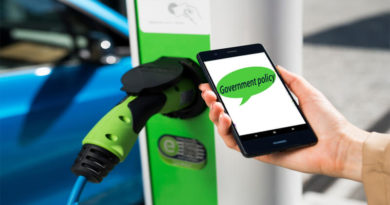After All Electric Bus Fleet, Shenzhen Ready to Transform its Taxis Next
China's lead in electric transportation was demonstrated yet again as Shenzhen, a key city in Guangdong province, converted its complete bus fleet to electric. Becoming the first in the world to do so.
 All Electric, All 16,000 of them
All Electric, All 16,000 of them
Shenzhen in the Guangdong province of Southeastern China, one of the most populous cities in the country, recently became the first major city in the world to run an entirely electric bus fleet. And with around 60 percent of all its taxis already electric, the city is planning to follow ensure a similar outcome for taxis by 2020.
And before you wonder, the bus network itself is bigger than that in any major Indian city. The entire public bus network which consists of over 16,000 buses was became all electric thanks on the back of subsidies from the national as well as state governments. In 2017, the city offered 3.3 billion yuan (US$490 million) in subsidies for e-buses and the construction of charging facilities. To keep its electric buses running, the city has built 510 charging stations equipped with 8,000 charging poles. At Qinghu Bus Terminal, the Western Bus Group installed more than 30 charging poles in September. It’s a model that India seems to be veering towards too.

“A bus can be fully charged within two hours and the charging poles can serve 300 buses a day,” said Guan Anguang, assistant manager of the terminal.
According to the city’s public transport department, Shenzhen along with the largest bus fleet in the world is also home to one of the largest taxi fleets in the world. Out of all its taxis, 12,518, or 62.5 percent in the city, run on electricity. “We will gradually replace the existing fuel-powered cabs with electricity-powered ones and complete the target by 2020, or even ahead of schedule,” said Zheng Jingyu, head of the public transport department of the city’s public transport administration bureau. In 2018, the remaining 500 green cabs that are restricted from Futian, Luohu, Nanshan and Yantian districts, which constituted the former Shenzhen Special Economic Zone, will be replaced with electric cabs and be allowed to operate citywide.
“The wide use of electric buses and cabs plays a significant role in improving air quality and constructing a beautiful Shenzhen,” said Lou Heru, vice head of the city’s transport commission. The electric buses use 72.9 percent less energy than diesel buses. In a year, the buses could save the energy equivalent of 366,000 tons of standard coal, replacing 345,000 tons of fuel, and reducing carbon dioxide emissions by 1.35 million tons. The e-taxis will save the energy equivalent of 119,000 tons of standard coal, replacing an additional 116,000 tons of fuel.
China’s huge investment in electric transport comes on the back of a wider drive to reduce smog. Air quality in big Chinese cities often reaches hazardous levels. In 2014, the country “declared war” on pollution, halting the construction of new power plants and investing heavily in renewable energy as well as green technology. By introducing electric buses, the city could reduce CO2 emissions by an estimated 48%, compared to diesel buses, and up to 100% of other local pollutants.
Other cities, such as New York and London, are also following the electric bus route. London plans to make all its single-decker buses emission-free by 2020, and all its double deckers hybrid by 2019, while, New York plans to make its bus fleet all-electric by 2040.
(Visited 570 times, 1 visits today)




